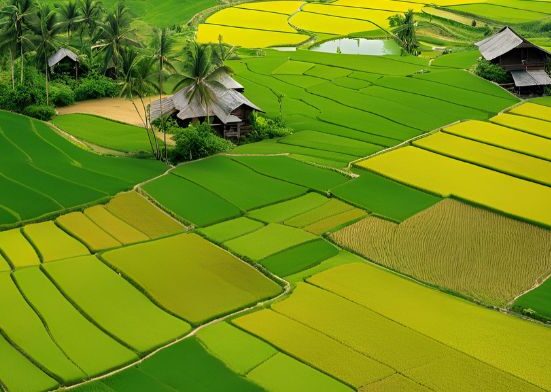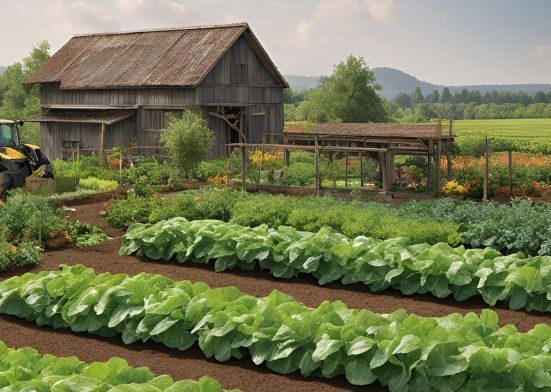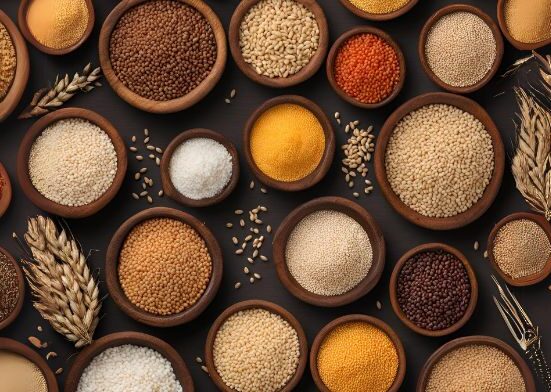Commercial farming, or agribusiness or industrial agriculture, is vital in feeding the world’s growing population. Unlike subsistence farming, which is focused on producing enough food for a farmer’s family, commercial agriculture is driven by the goal of large-scale production for sale in local, national, or international markets. This agriculture method involves using modern technologies, high-yield crop varieties, chemical fertilizers, advanced irrigation systems, and mechanized equipment to maximize output and efficiency.Food, fiber, and fuel needs worldwide has resulted in the rapid expansion of commercial farming across continents. nations such as China, India, Brazil, and the United States have adopted large-scale farming systems to meet both domestic needs and export goals. Commercial farming contributes significantly to national economies and supports employment, rural development, and trade.
However, while it offers many advantages, commercial farming has challenges. Environmental degradation, high input costs, and the socio-economic impact on small-scale farmers continue to raise important questions about sustainability and equity.This blog article will examine the salient characteristics, benefits, challenges, and future of commercial farming def in today’s interconnected world.
What is Commercial Agriculture?
Commercial agriculture, or commercial farming, is growing crops and raising livestock primarily for sale in the market rather than for personal consumption. It is a large-scale, profit-driven form of agriculture that focuses on producing food, fiber, and other agricultural products in bulk to meet market demand, both locally and internationally.Unlike subsistence farming, where farmers grow only enough food to feed their families, commercial agriculture involves cultivating vast areas of land using modern techniques, equipment, and technology to boost output and effectiveness. This type of farming is often capital-intensive and requires significant investment in seeds, fertilizers, Modern Commercial Agriculture pesticides, irrigation systems, and harvesting equipment.
There are several types of commercial agriculture, including:
- Arable farming: Focused on growing crops like wheat, rice, corn, and vegetables.
- Pastoral farming involves raising animals such as cattle, sheep, and poultry.
- Mixed farming: Combines both crop cultivation and livestock rearing.
- Plantation farming specializes in one or two high-demand crops, such as tea, coffee, sugarcane, or bananas, typically grown for export.
Commercial agriculture is crucial in feeding large populations, supporting economic growth, and supplying raw materials to various industries. However, it also brings environmental and ethical challenges that require responsible and sustainable management.
What is Commercial Cultivation?
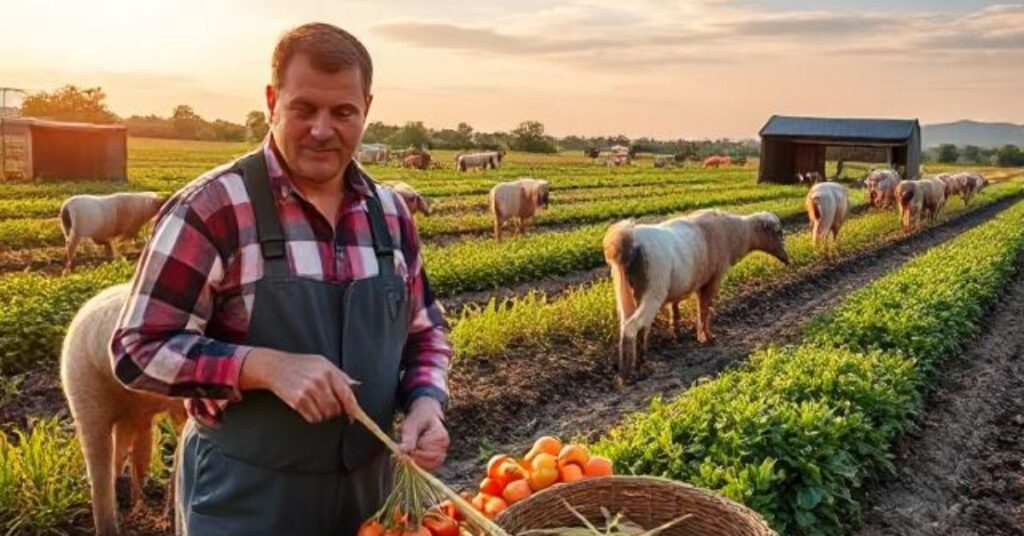
Commercial cultivation refers to the large-scale growing of crops primarily for sale and profit rather than for personal use or subsistence. It uses advanced agricultural techniques, modern equipment, and high-yield crop varieties to maximize production and meet market demand. This form of cultivation is usually practiced on extensive plots of land and focuses on crops with significant commercial value.Cotton, sugarcane, coffee, tea, rice, maize, fruits, and vegetables are examples of crops commonly grown in commercial cultivation. These crops are often supplied to industries for processing or exported to generate revenue. Commercial cultivation is common in regions with good infrastructure, market access, and favorable government policies supporting agribusiness.
Unlike traditional farming, which is often labor-intensive and low output, commercial cultivation relies heavily on mechanization, irrigation systems, chemical fertilizers, and pest control. If not managed sustainably, this approach significantly boosts productivity and can lead to environmental issues such as soil depletion, water overuse, and pesticide pollution.definition commercial farmingl cultivation is vital to the global economy by contributing to food security, employment, and trade. what commercial farming However, careful planning is also required to balance profitability with environmental and social responsibility.
Main Features of Commercial Farming
Commercial farming is characterized by several distinct features that set it apart from traditional or subsistence agriculture. These features are designed to maximize productivity, efficiency, and profitability:
Large-Scale Operations
commercial farm is typically conducted on large plots of land. The goal is to produce crops or raise livestock in bulk quantities to meet market demand and generate substantial revenue.
High Investment
It requires significant capital investment in land, machinery, seeds, fertilizers, labor, and infrastructure. Many commercial farms are run as agribusinesses or corporate farms with dedicated funding.
Use of Modern Technology
Advanced machinery like tractors, harvesters, and irrigation systems are commonly used. Drones, automated systems, and precision farming are examples of technologies. help improve efficiency and crop yield.
Market-Oriented Production
Crops and livestock are grown specifically for sale in local, national, or international markets. Unlike subsistence farming, which focuses on self-consumption, profitability is the primary motive.
Monoculture Practice
Many commercial farms focus on a single crop (monoculture) such as wheat, sugarcane, or cotton to simplify management and maximize profits, though this can pose environmental risks.
Use of Chemical Inputs
Commercial farming heavily relies on chemical fertilizers, pesticides, and herbicides to enhance growth and protect crops, which, if used excessively, can contaminate land and water.
Major Commercial Farming Products
Commercial farming is focused on large-scale crop and livestock production with significant market value. These products are cultivated to meet domestic needs and exports, contributing substantially to a country’s economy. Living The Land Here are the main categories:
Food Crops
These are staple crops grown in large quantities for human consumption. They include:
- Wheat is used for flour and bread production and is widely grown in countries like the USA, Russia, and India.
- In Asia, rice is a staple grain that is widely cultivated. in countries like China, India, and Vietnam.
- Maize (corn) – Used for food, animal feed, and biofuel; major producers include the USA, Brazil, and Argentina.
Cash Crops
Cash crops are explicitly cultivated for commercial gain rather than for local consumption:
- Cotton – A vital raw material for the textile industry.
- Sugarcane – Used for producing sugar, ethanol, and alcohol.
- Coffee and Tea – High-demand beverages grown mainly in tropical regions like Brazil, Colombia, India, and Kenya.
Horticultural Products
This includes fruits, vegetables, and flowers:
- Bananas, apples, and Citrus fruits are commonly grown in domestic and export markets.
- Tomatoes, Onions, Potatoes – High-demand vegetables cultivated for commercial use.
- Flowers – Such as roses and tulips, often grown in controlled environments for export.
Livestock and Dairy
Commercial animal farming includes:
- Cattle (for beef and dairy)
- Poultry (chickens for meat and eggs)
- Pigs (pork production)
Is dairy farming commercial or subsistence
Dairy farming can be both commercial and subsistence, depending on the scale, purpose, and method of production:
Commercial Dairy Farming
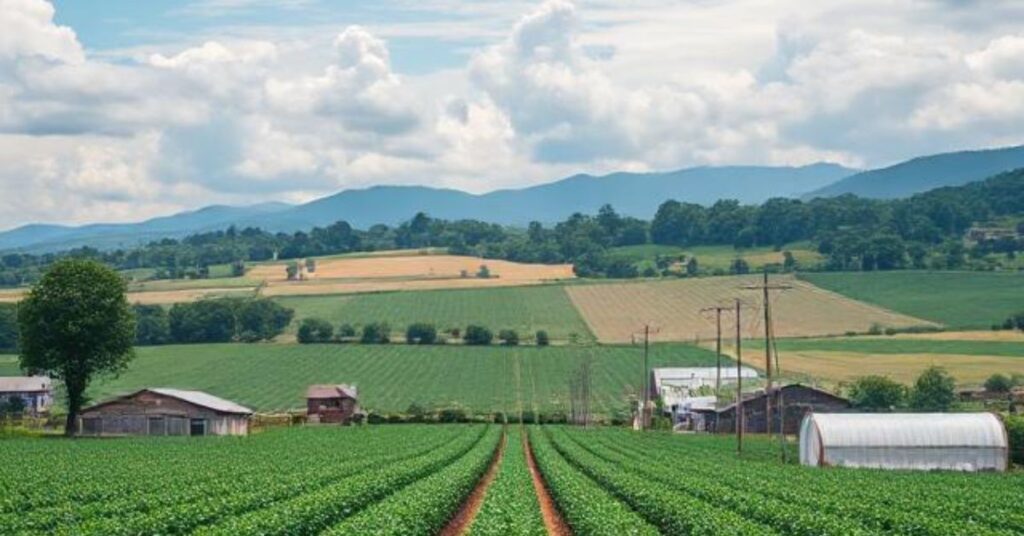
- Purpose: Primarily to sell milk and dairy products (cheese, yogurt, butter) on the market.
- Scale: Large-scale operations with dozens to thousands of cows.
- Technology: Uses modern equipment like milking machines, refrigeration units, automated feeding systems, and veterinary services.
- Location: This is common in developed countries and regions with a strong dairy industry (e.g., the USA, the Netherlands, New Zealand, India).
- Profit-driven: Focuses on maximizing yield, What Are Cash Crops efficiency, and profit.
Example: A dairy farm supplying milk to supermarkets or processing plants is commercial.
Subsistence Dairy Farming
- Purpose: Milk is mainly used for the farmer’s household; any surplus may be sold locally.
- Scale: Small-scale, often with just one or two cows or buffaloes.
- Technology: Minimal or no mechanization; traditional methods used.
- Location: Common in rural areas of developing countries.
- Self-sufficiency: Focused on family nutrition rather than income.
Example: A village family keeps a cow for milk consumption practices, subsisting on dairy farming.
Dairy farming can be either commercial or subsistence, depending on how it’s managed. Most modern dairy farms are commercial, especially in urban supply chains and export industries.
Advantages of Commercial Farming
Commercial farming offers numerous benefits for food security, economic development, and agricultural innovation. Below are the key advantages:
High Productivity
Commercial farming focuses on large-scale operations, which allow for the production of vast quantities of crops and livestock. This aids in satisfying the rising dietary needs of an increasing global population.
Economic Growth
Commercial agriculture contributes to national and local economies by generating income, supporting agribusiness industries, and boosting exports. Many countries rely on commercial agriculture definition as a significant GDP and foreign exchange source.
Employment Opportunities
Commercial farms create jobs in various sectors, including cultivation, harvesting, processing, packaging, transportation, and marketing. This helps reduce rural unemployment and supports livelihoods.
Technological Advancement
Commercial farming encourages modern technology such as tractors, irrigation systems, drones, and precision agriculture tools. When Were Greenhouses Invented These innovations lead to higher efficiency and improved crop yields.
Better Resource Management
With planned operations and investment, commercial farms often use water, fertilizers, and energy more efficiently than unorganized farming.
Improved Infrastructure
The growth of commercial farming often leads to the development of rural infrastructure, including roads, cold storage, and irrigation facilities, benefiting the wider community.
Supply Chain Development
It supports the development of food processing industries, packaging units, and distribution networks, ensuring better access to food products in urban and international markets.
Challenges in Commercial Farming
While commercial farming offers numerous benefits, it also faces several significant challenges. These issues can impact productivity, sustainability, and the long-term viability of agricultural systems.
Environmental Degradation
Commercial farming relies heavily on chemical fertilizers, pesticides, and monoculture practices. This can lead to:
- Soil degradation
- Loss of biodiversity
- Water pollution
- Overuse of natural resources
These environmental impacts can reduce long-term farm productivity and harm ecosystems.
Climate Change and Weather Dependency
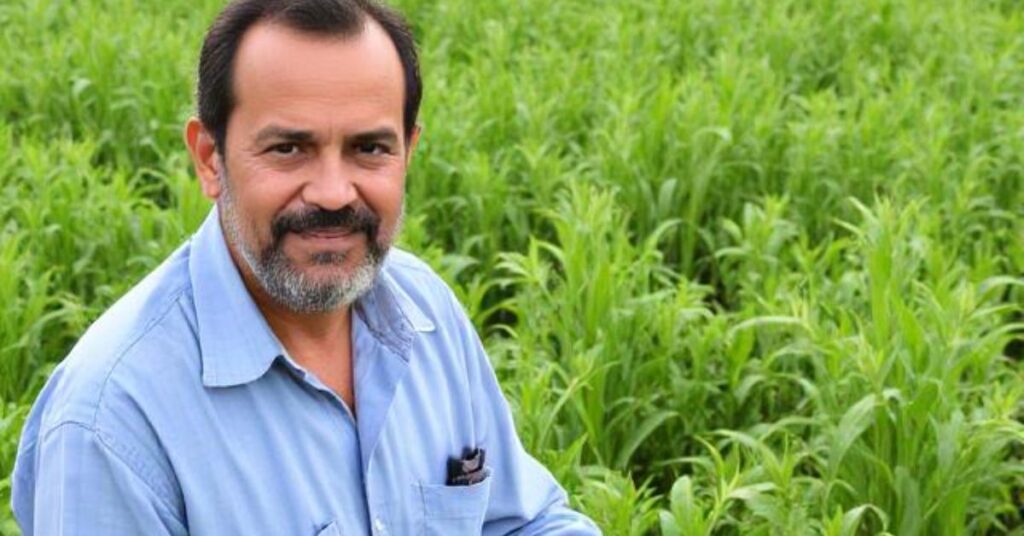
commercial of agriculture is highly vulnerable to changing weather patterns, droughts, floods, and other climate-related risks. Unpredictable weather can lead to crop failure and economic losses.
High Input Costs
Using advanced machinery, chemical inputs, and irrigation systems requires significant investment. Rising fuel, seeds, and fertilizer costs can also reduce profit margins, especially for small commercial farmers.
Market Fluctuations
Prices of agricultural products can vary widely due to supply-demand imbalances, global trade issues, and economic instability, making farming income unpredictable.
Land Use and Displacement
Large-scale commercial farms can lead to the displacement of small-scale farmers and indigenous communities. Land grabbing and inequitable land distribution are growing concerns in many regions.
Labor Shortages
As farming becomes more mechanized, fewer laborers are required, which can lead to unemployment. Conversely, a lack of skilled labor can affect productivity in some regions.
Dependence on Government Policies
Subsidies, tax incentives, and trade agreements heavily influence commercial farming. Policy changes can either support or severely disrupt farming operations.
Food Safety and Ethical Concerns
Mass production and heavy chemical use raise concerns about food safety, animal welfare, and ethical farming practices. Consumers are increasingly demanding transparency and sustainable methods.
Conclusion
Commercial farming is vital in feeding the world’s growing population, driving economic development, and supporting global trade. Its large-scale, market-oriented approach allows for high productivity and the efficient use of technology, making it a key component of modern agriculture. From staple and cash crops to livestock and dairy products, commercial farming provides essential goods that sustain local and international markets.However, this progress comes with significant challenges. Environmental degradation, climate change, high input costs, and socio-economic inequalities must be addressed to ensure that commercial ag remains sustainable and inclusive. Balancing productivity with environmental stewardship and ethical practices is crucial for the future of farming.
As the demand for food and agricultural products continues to rise, the future of commercial farming lies in innovation, responsible resource management, What Is Agriculture A Simple Guide for Everyone and a shift toward more sustainable and equitable systems. Governments, farmers, businesses, and consumers all have a role to play in shaping an agricultural industry that is profitable, resilient, and environmentally sound.Commercial farming is not just about growing food—it’s about creating a future where agriculture benefits people, the planet, and the economy.
FAQ
What is commercial farming?
Commercial farming is large-scale agriculture focused on producing crops and livestock for sale in markets, using modern technology and methods to maximize yield and profit.
How does commercial farming differ from subsistence farming?
Commercial farming produces food primarily for sale and profit, while subsistence farming focuses on growing food mainly for the farmer’s own family or local community.
Which crops are the most commonly grown in commercial agriculture?
Common commercial crops include wheat, rice, maize, cotton, sugarcane, coffee, tea, fruits, and vegetables, grown in large quantities for market sale.
What are the environmental impacts of commercial farming?
Due to the heavy use of fertilizers, pesticides, and monoculture practices, commercial farming can cause soil degradation, water pollution, and biodiversity loss.
Is commercial farming sustainable?
Sustainability depends on management; adopting modern technology, crop rotation, organic inputs, and water conservation can make commercial farming more environmentally friendly.



